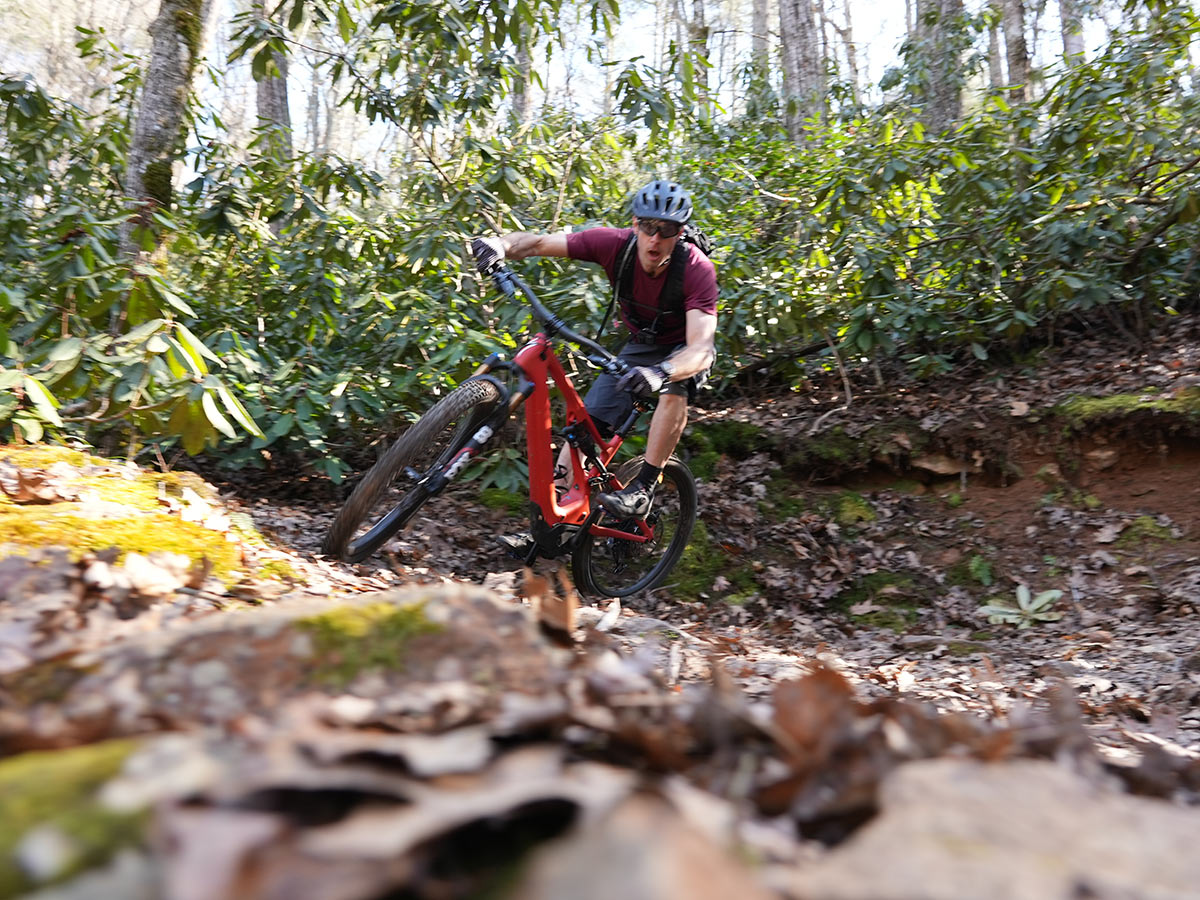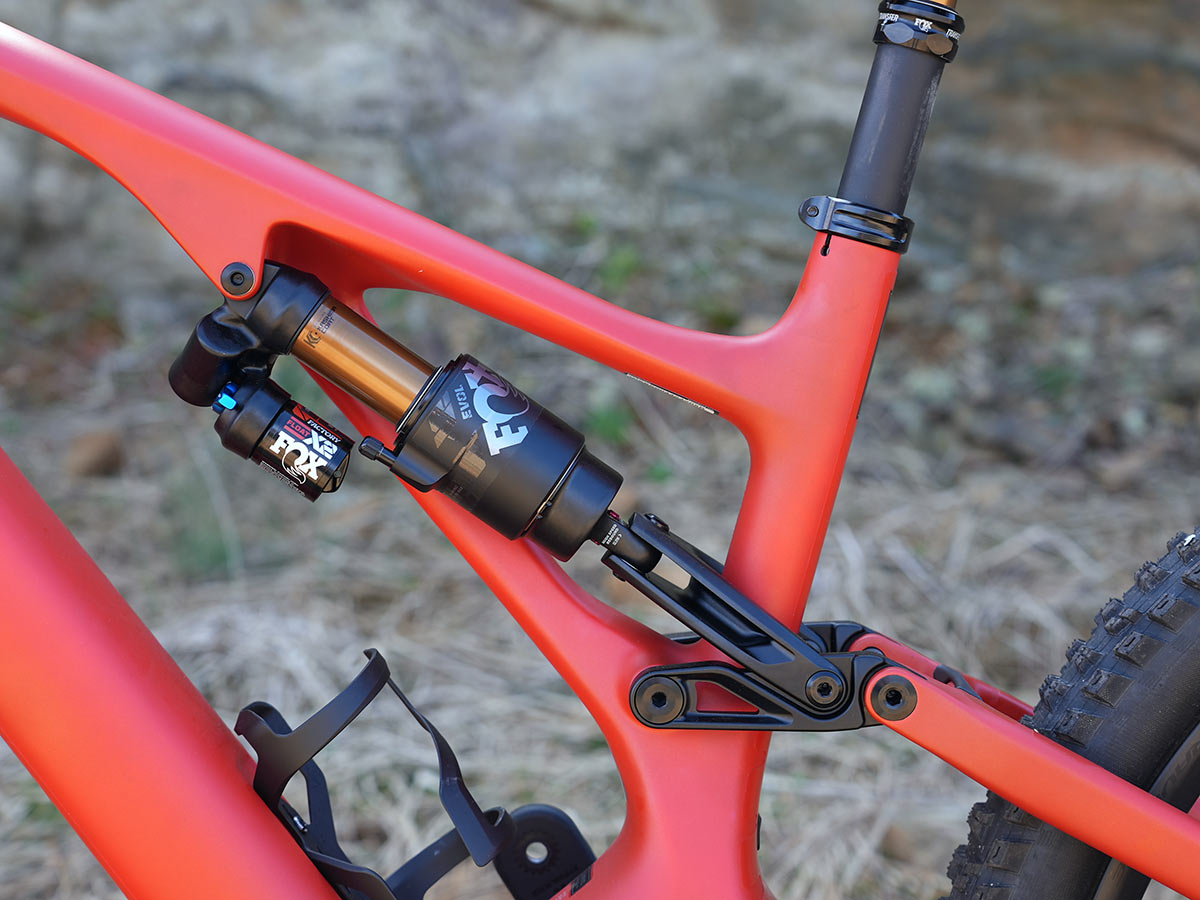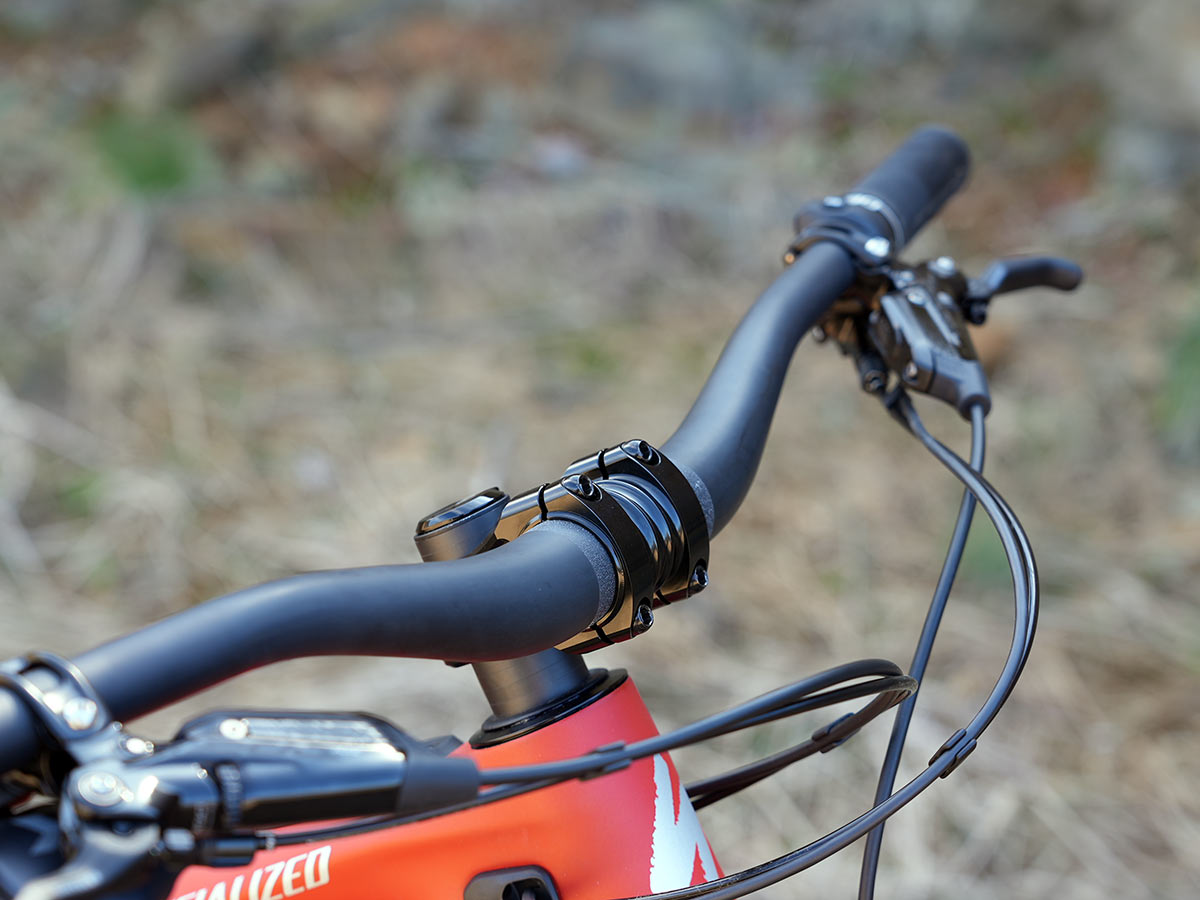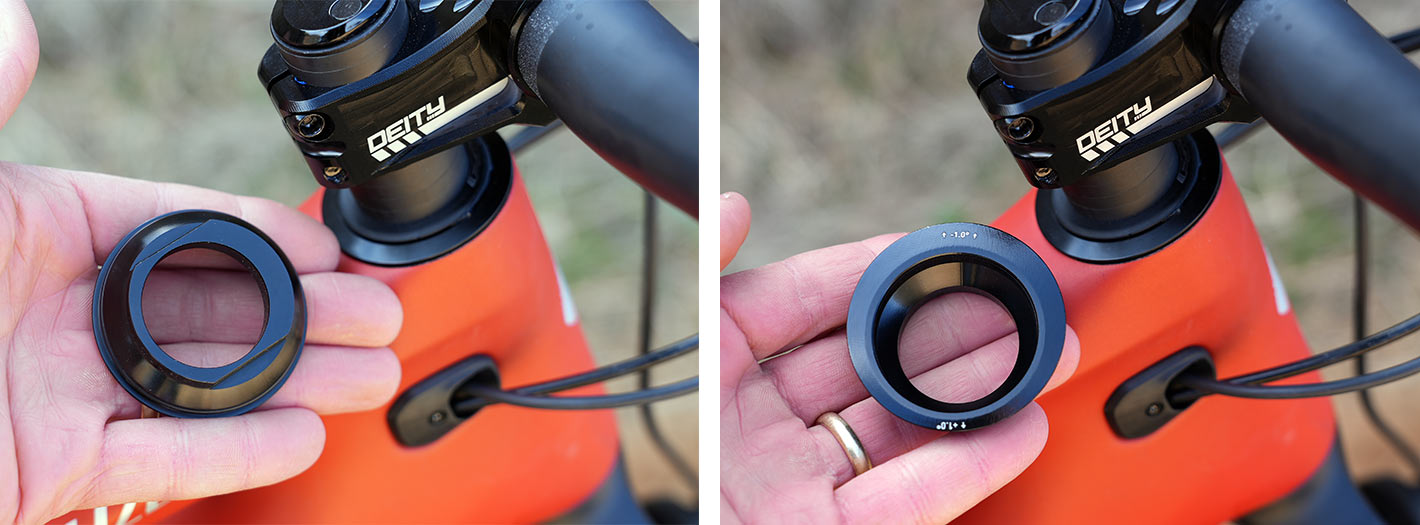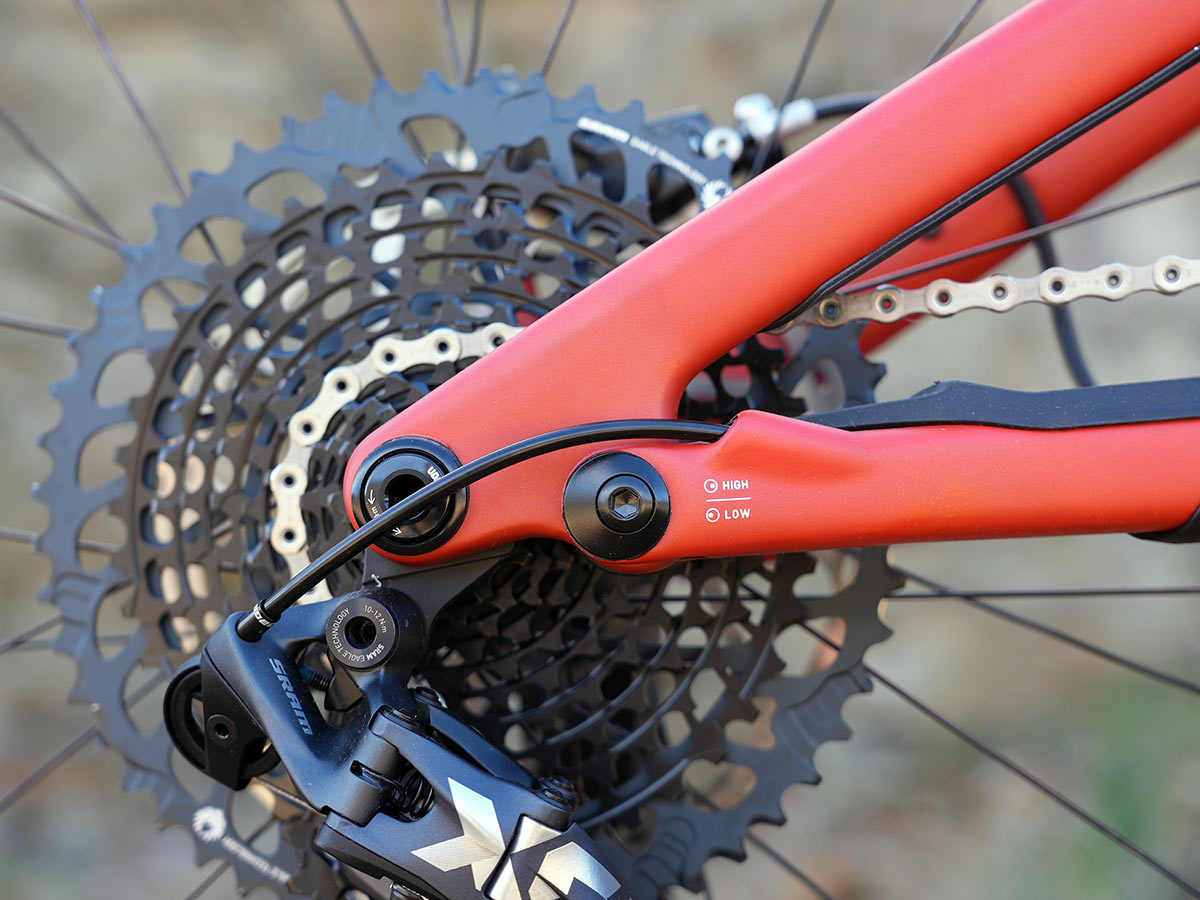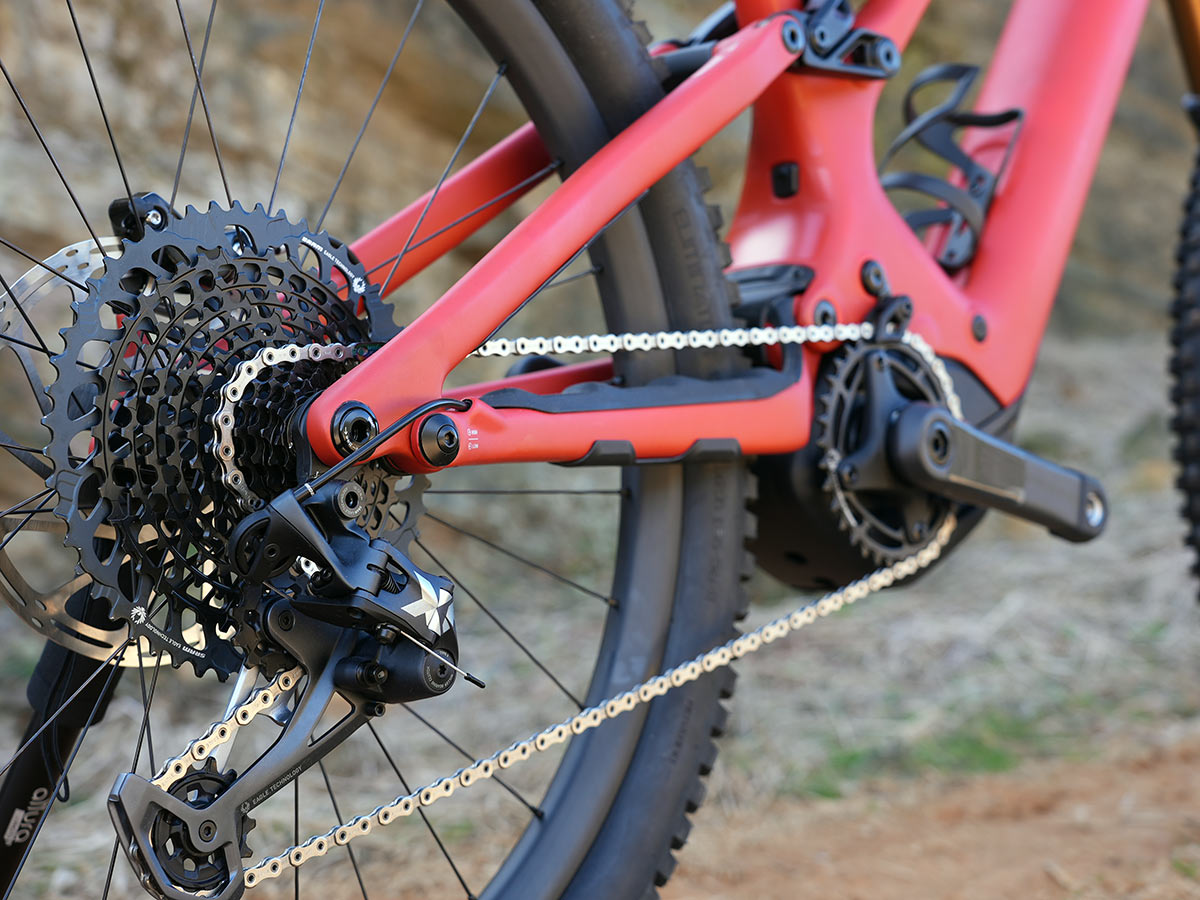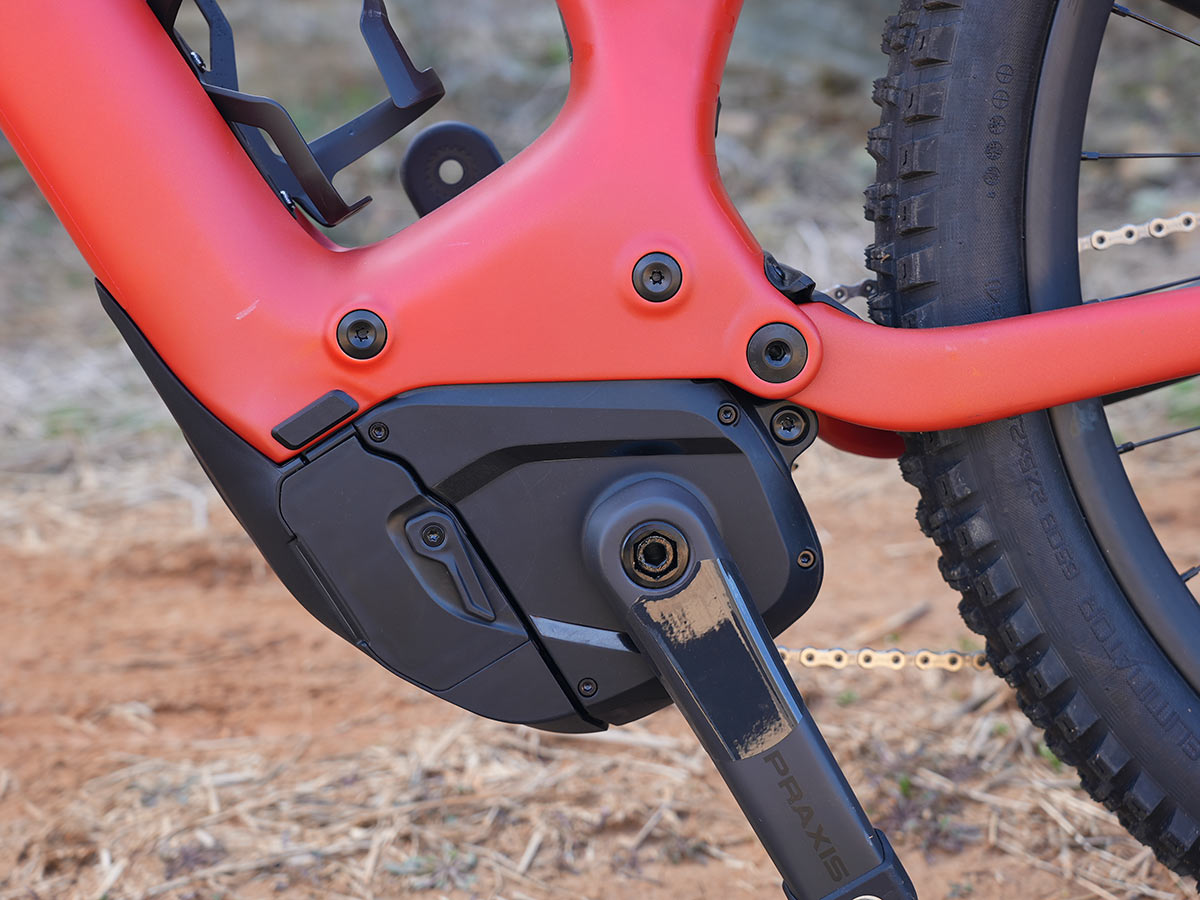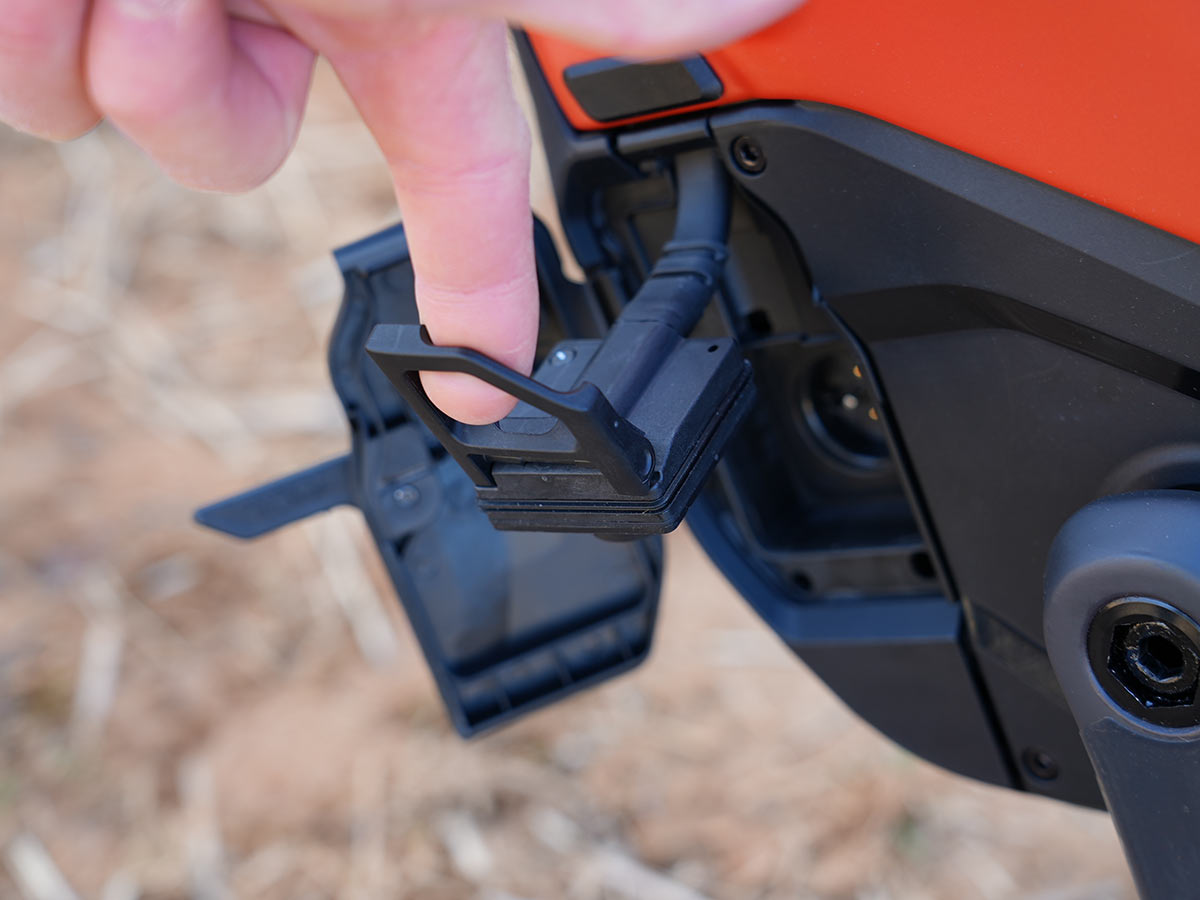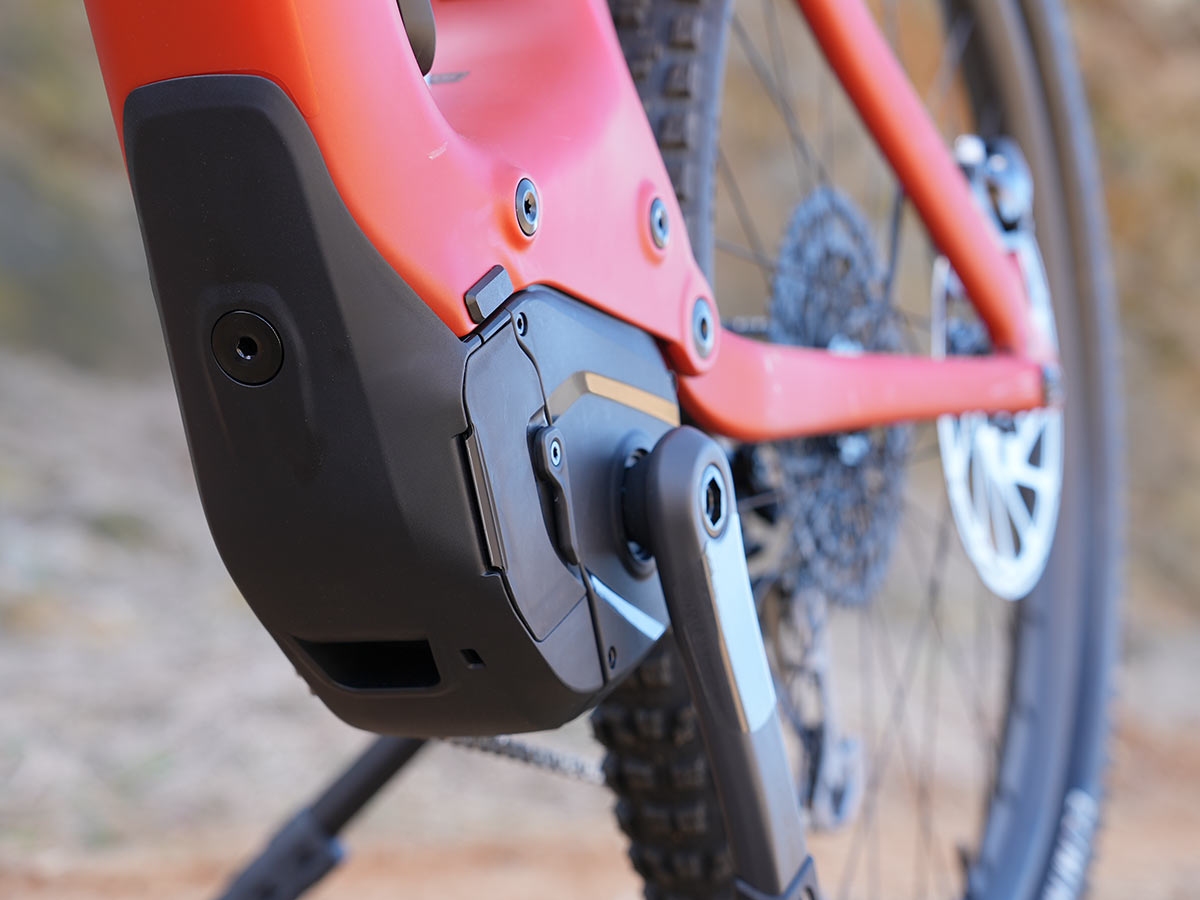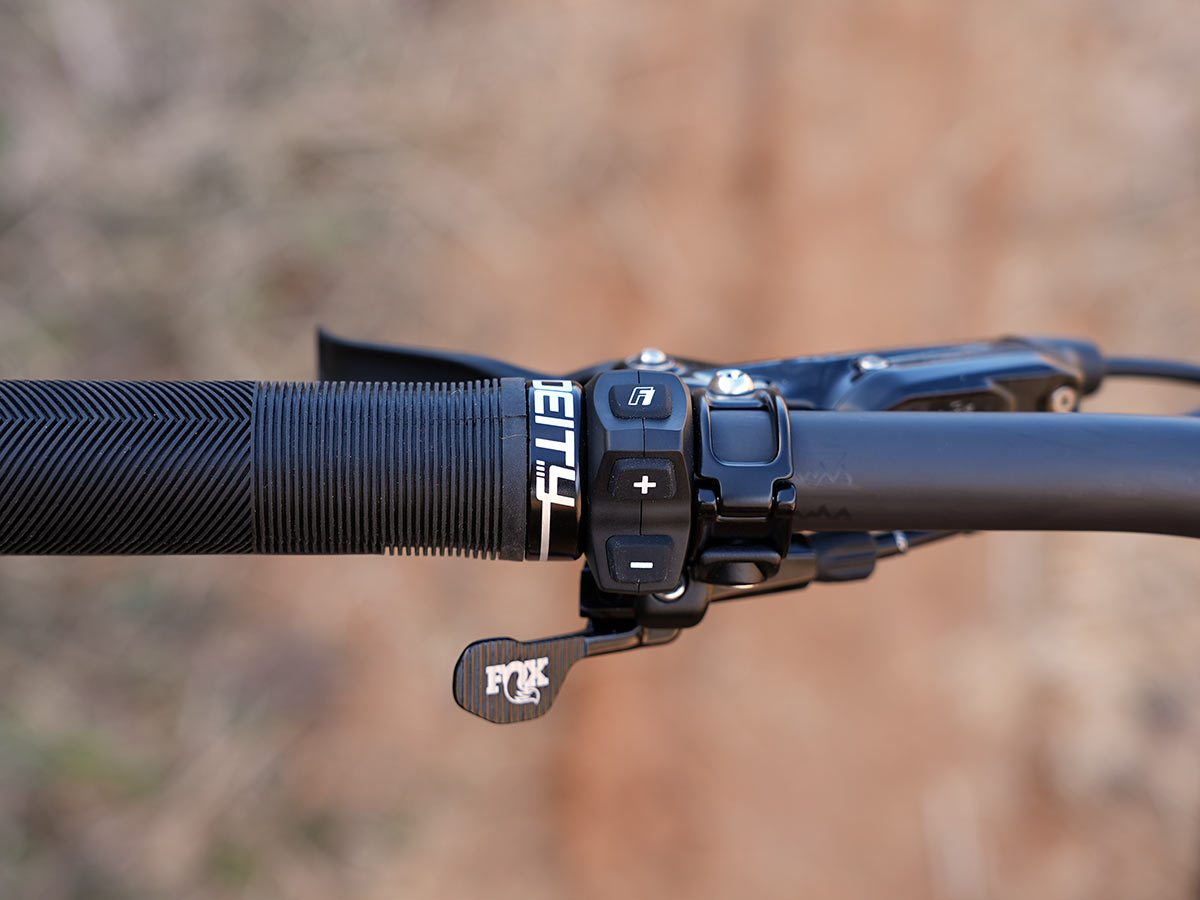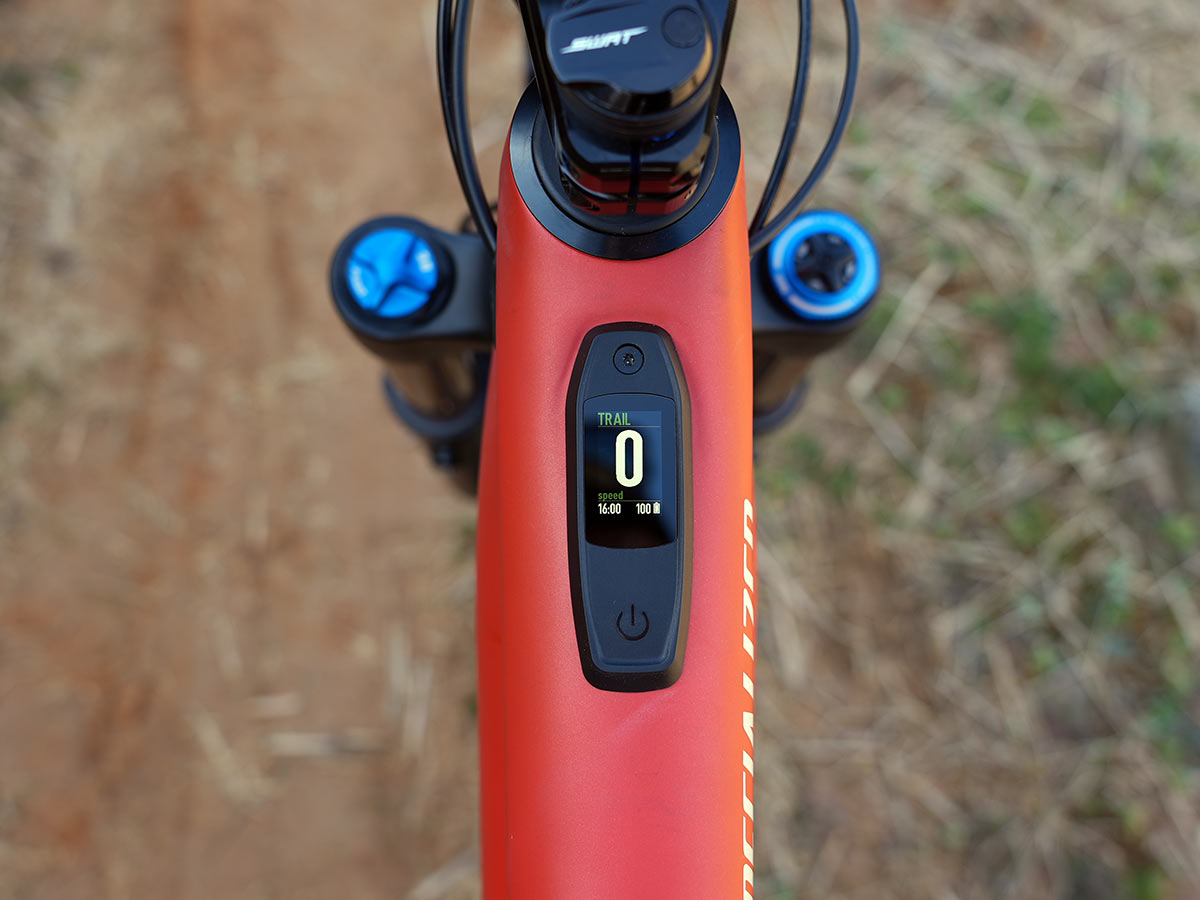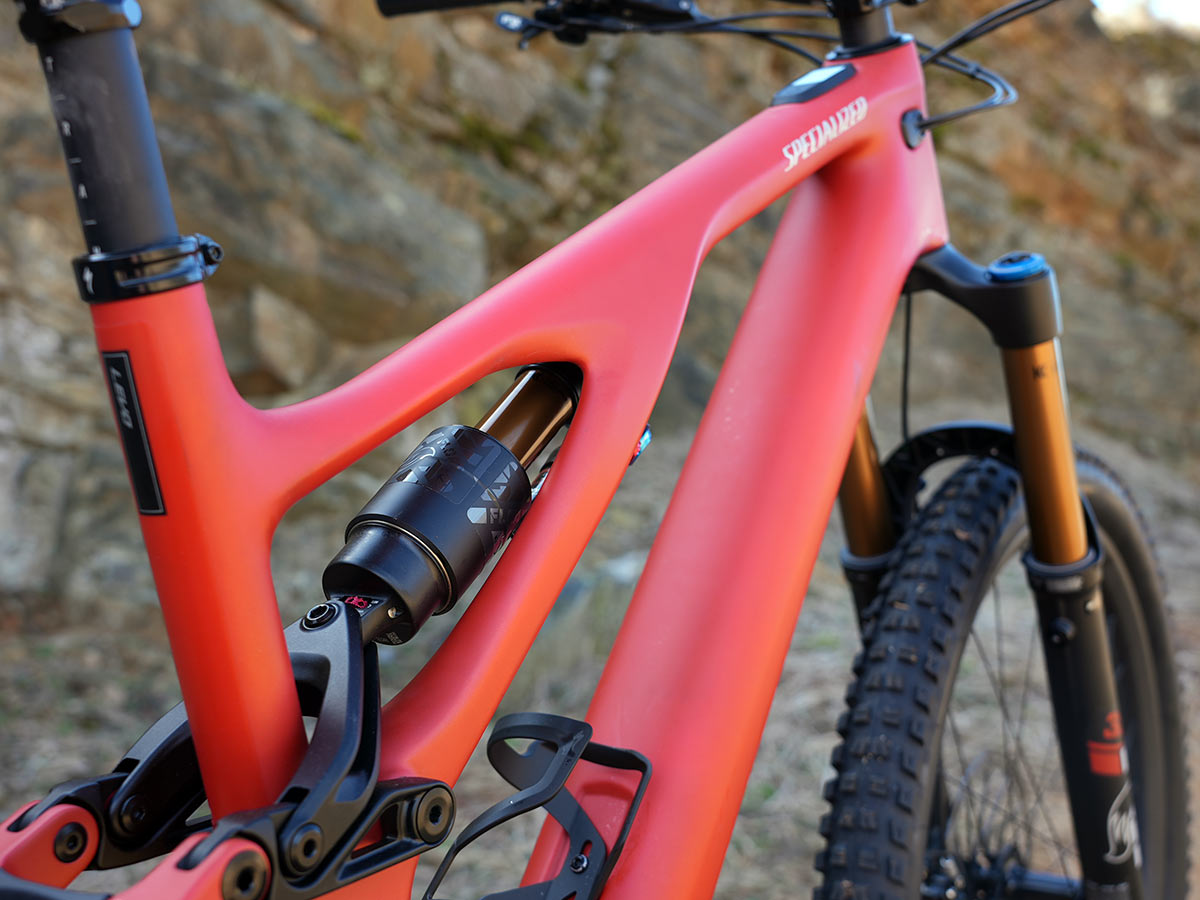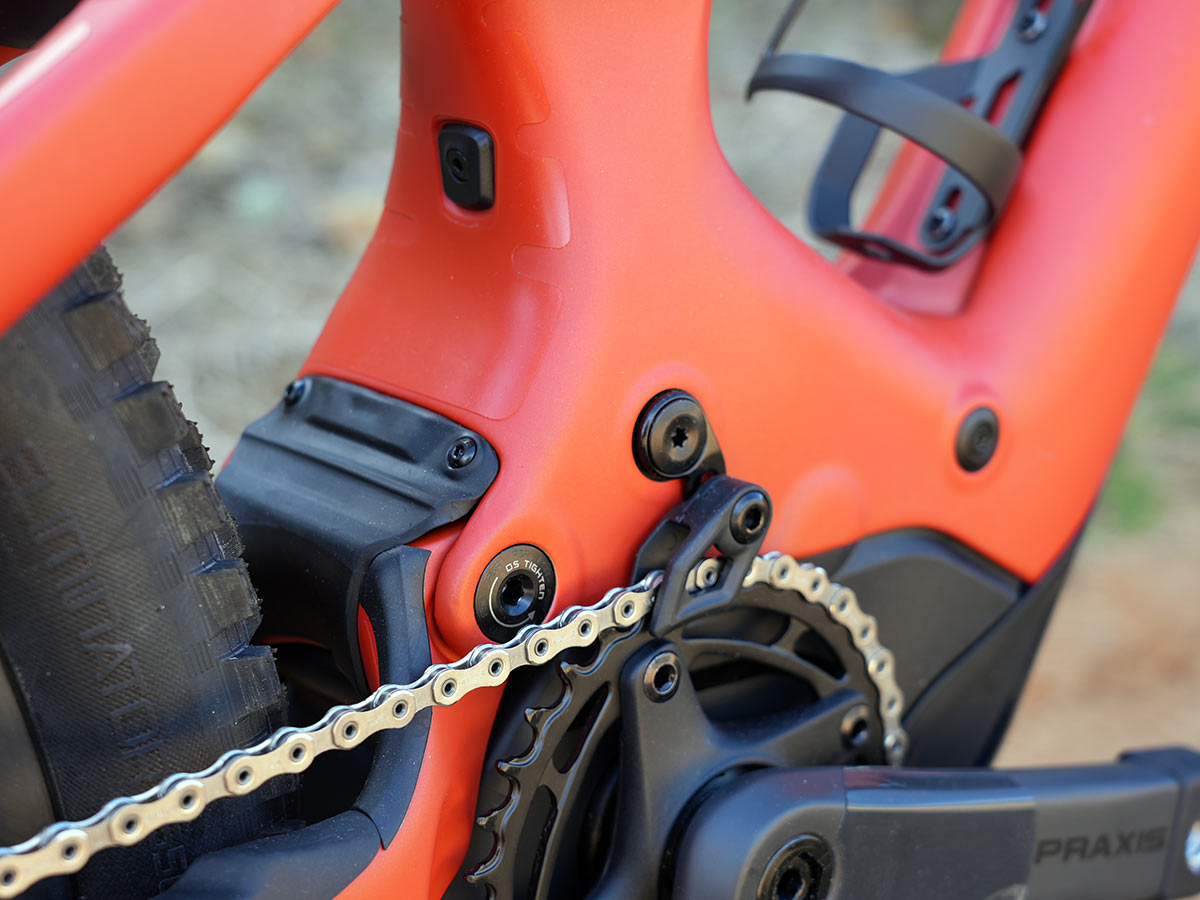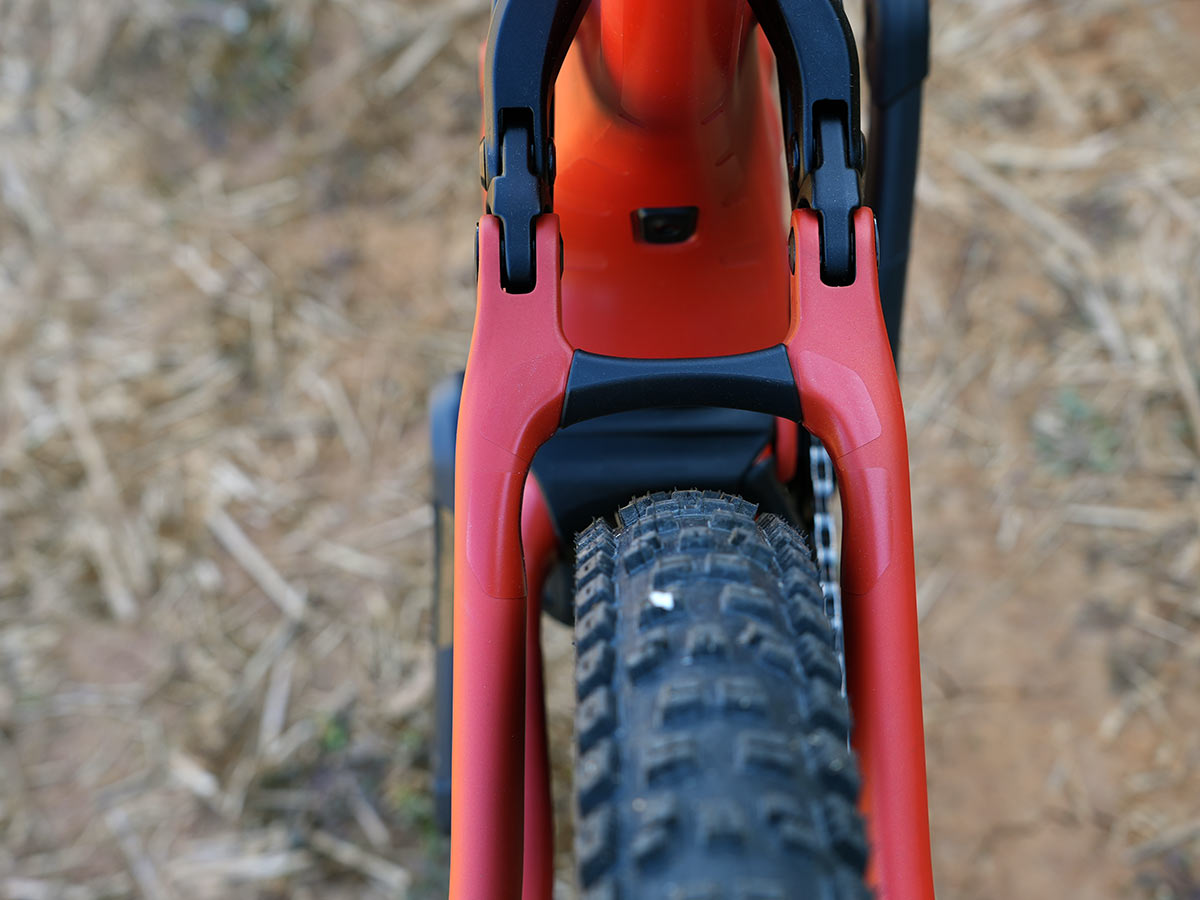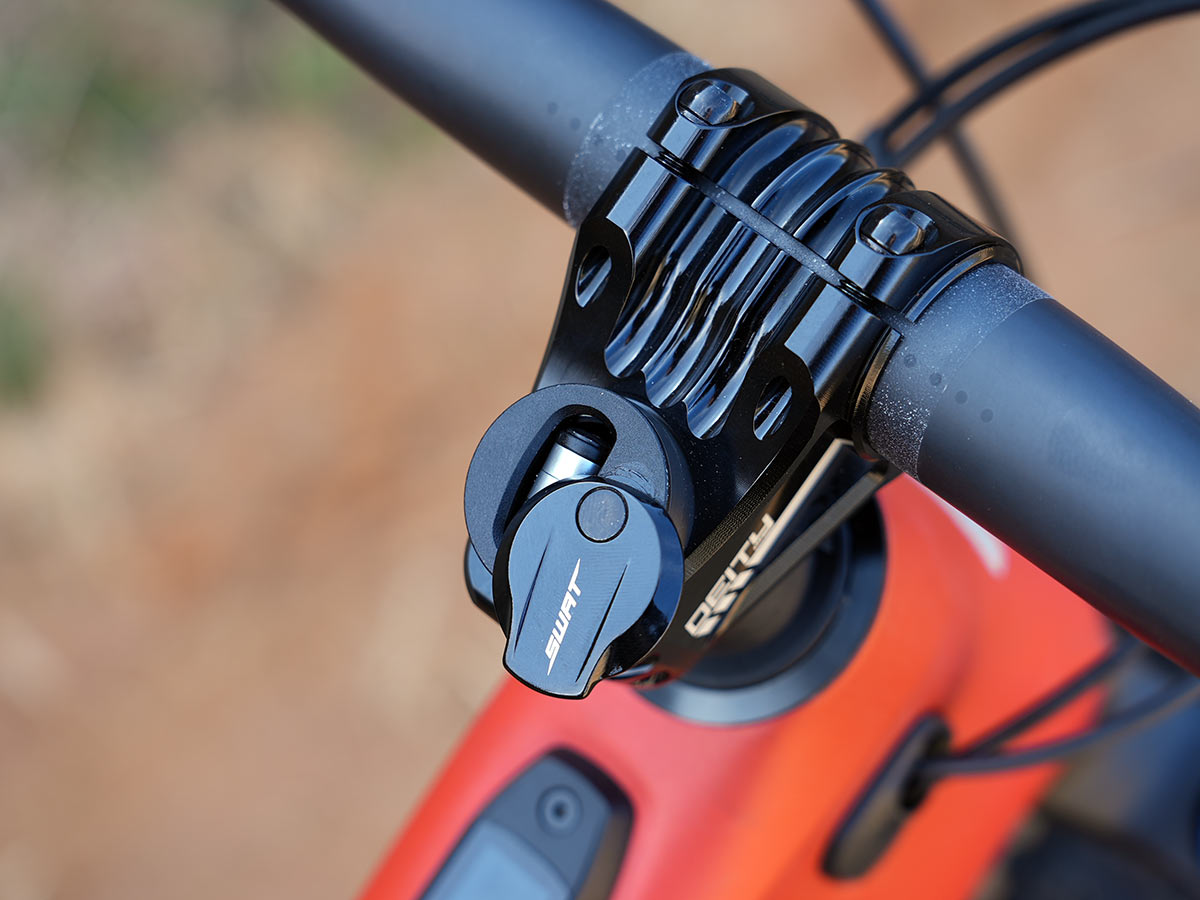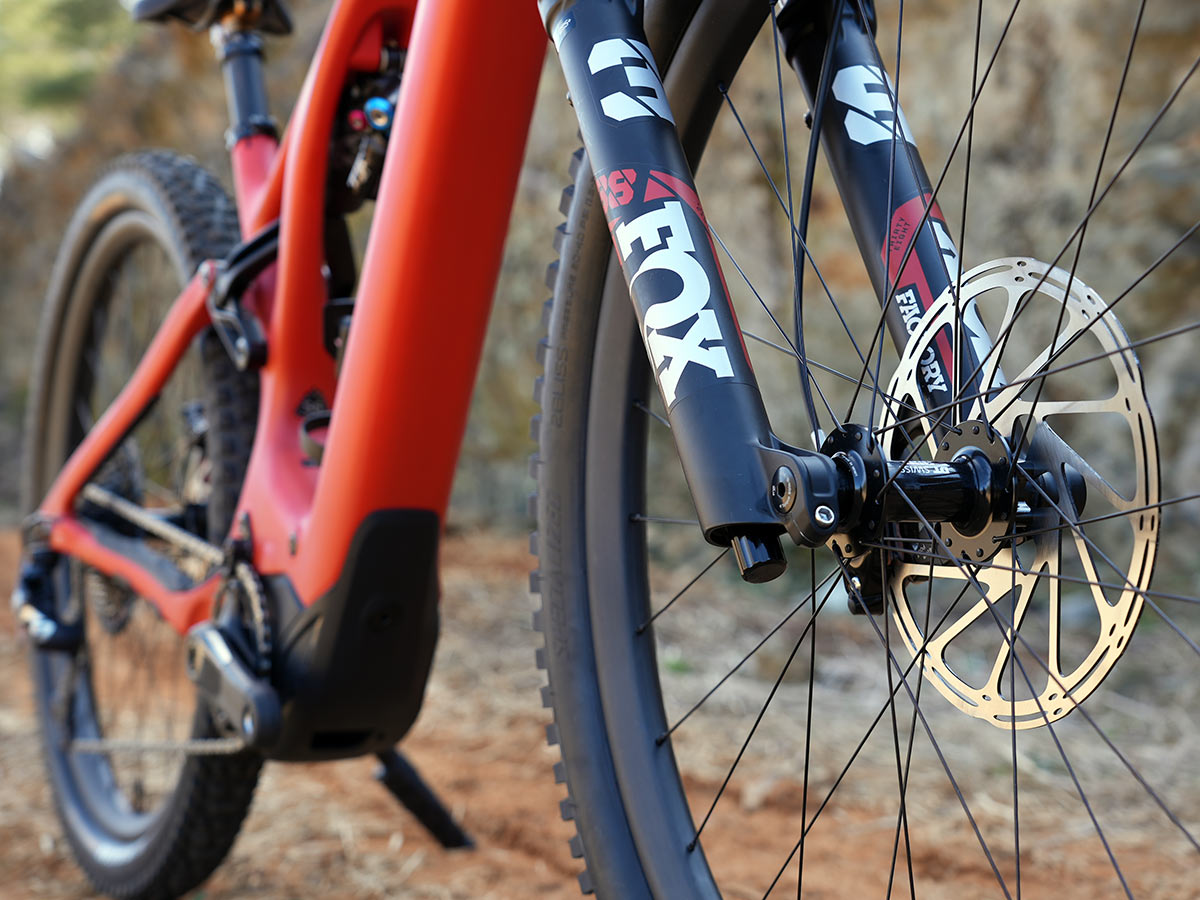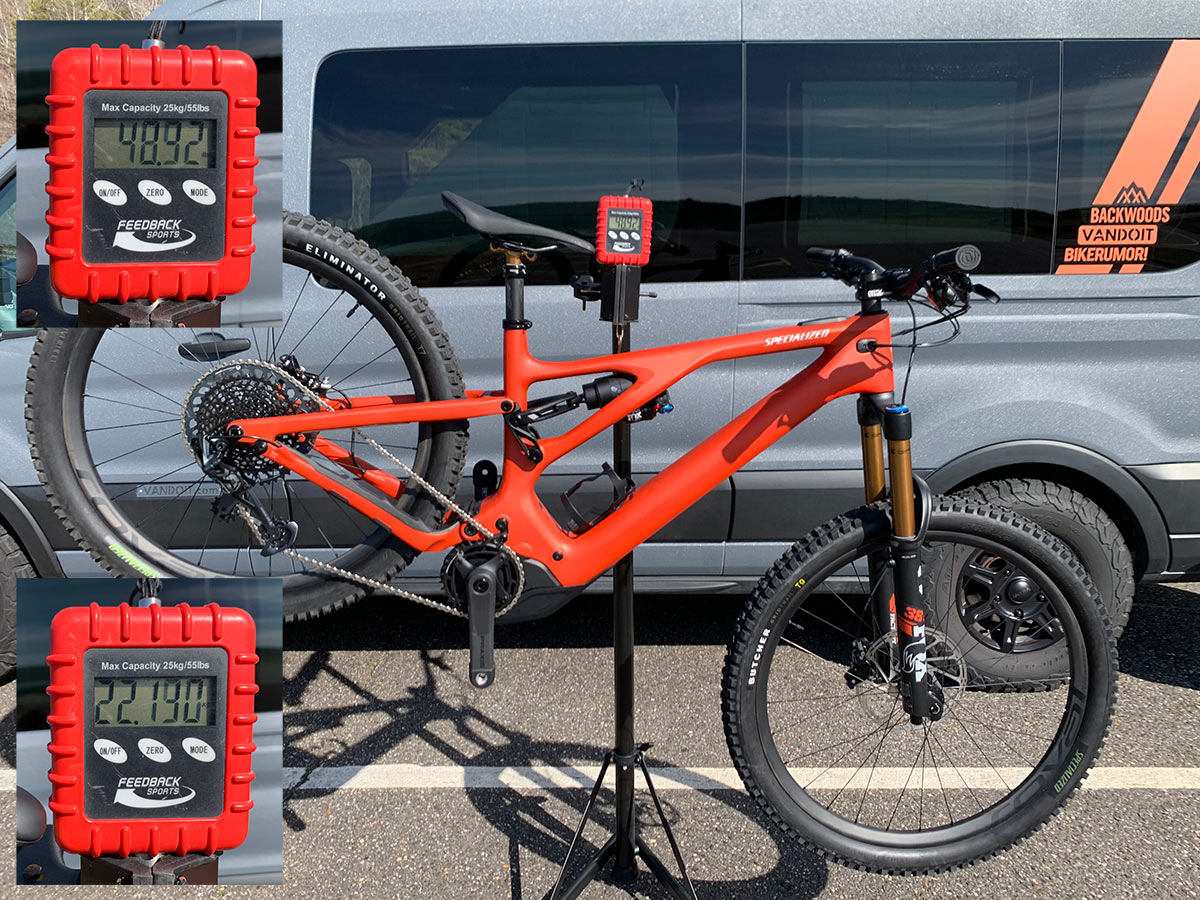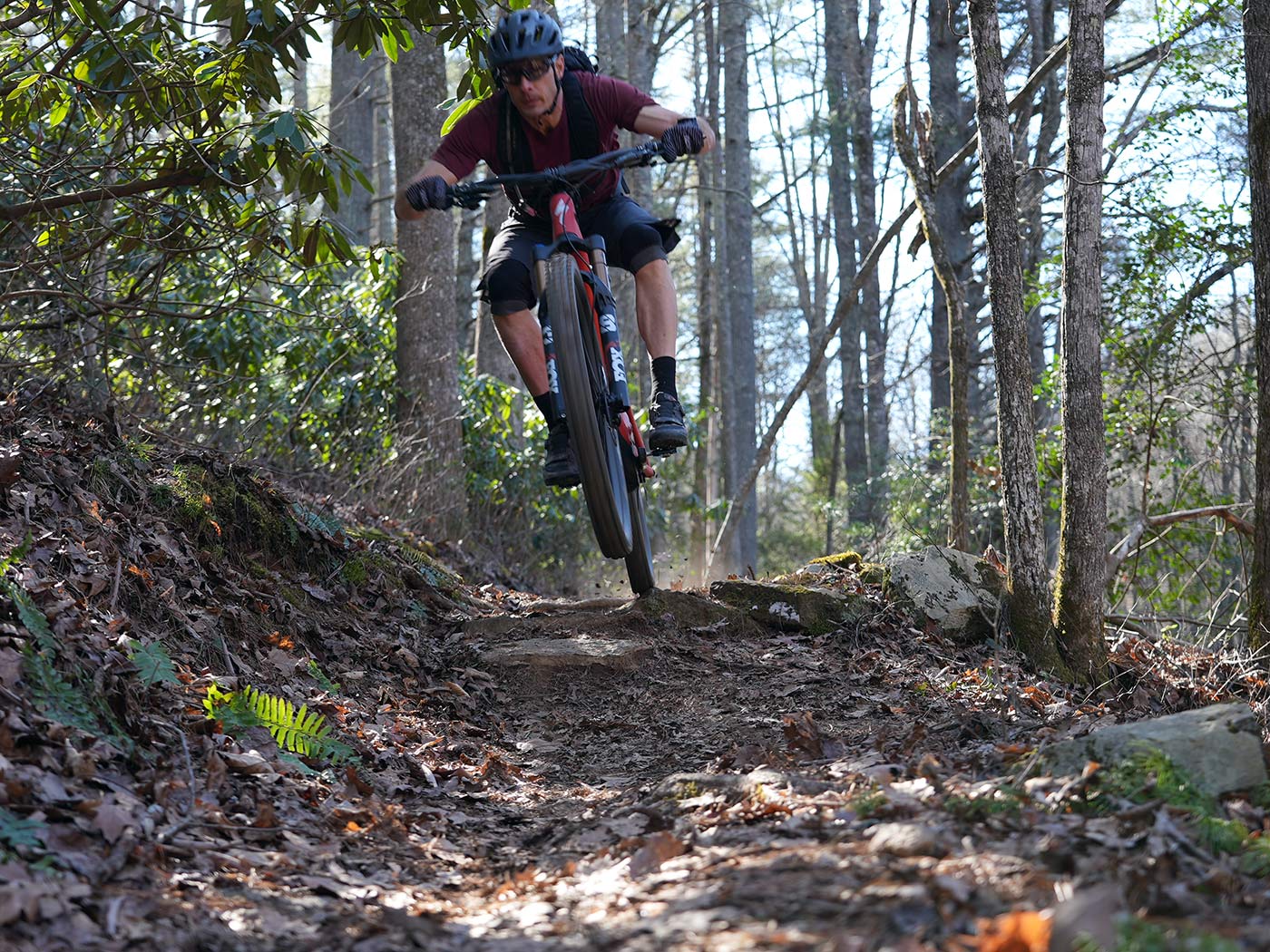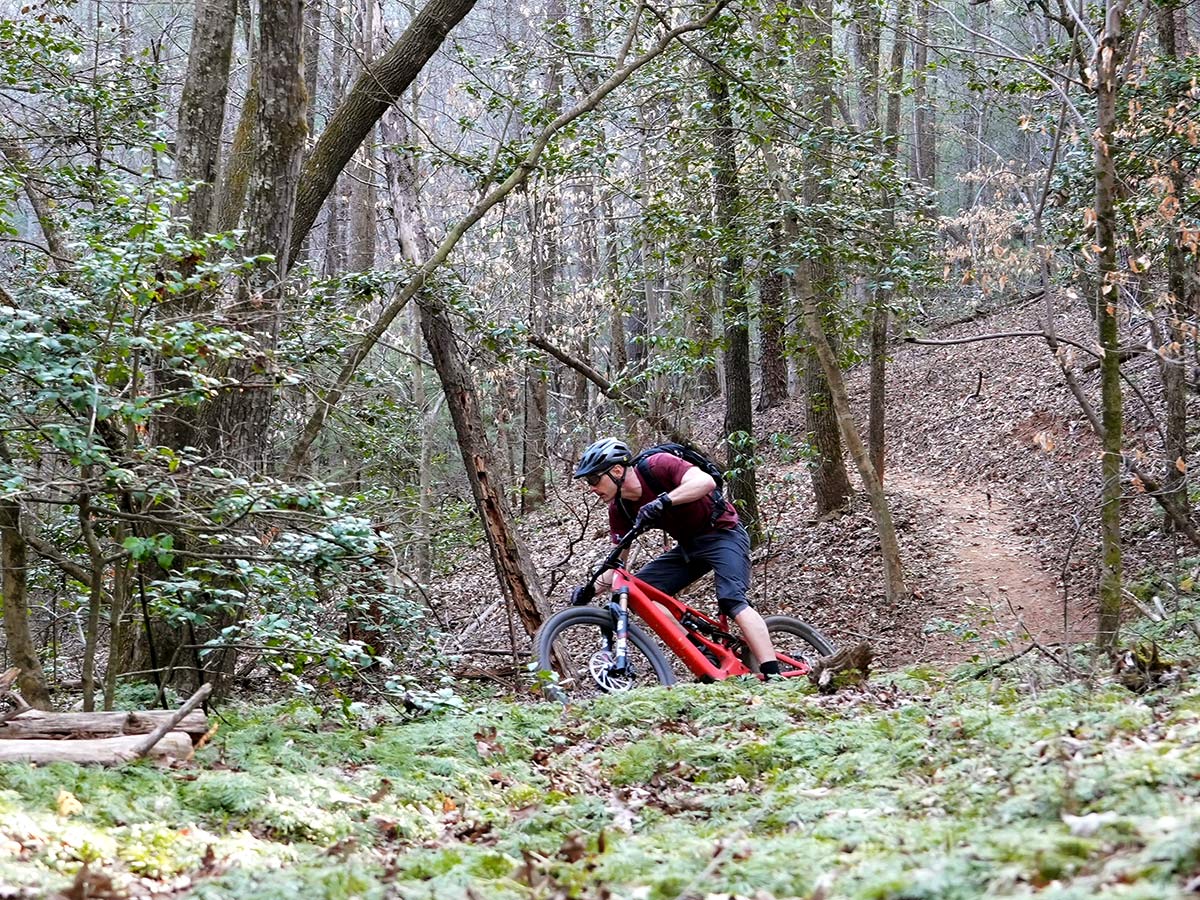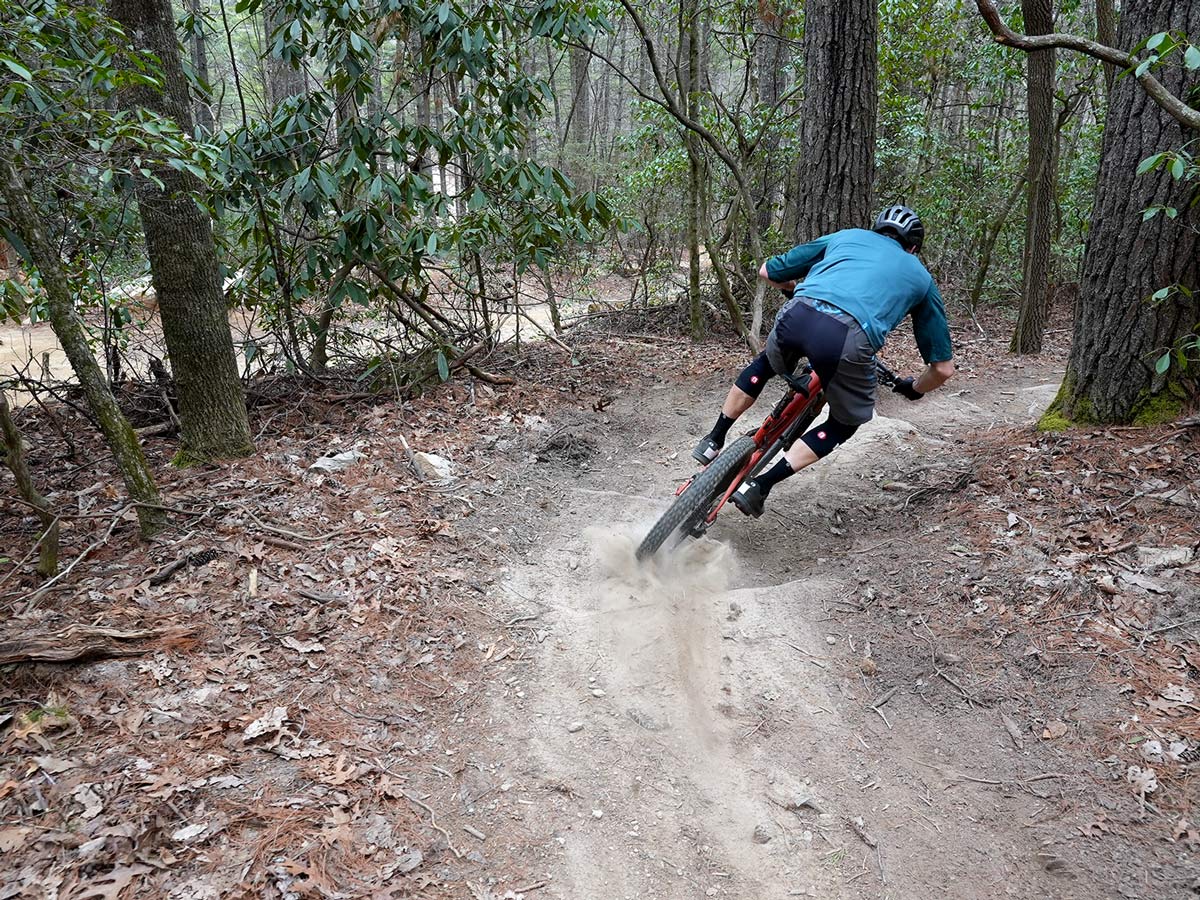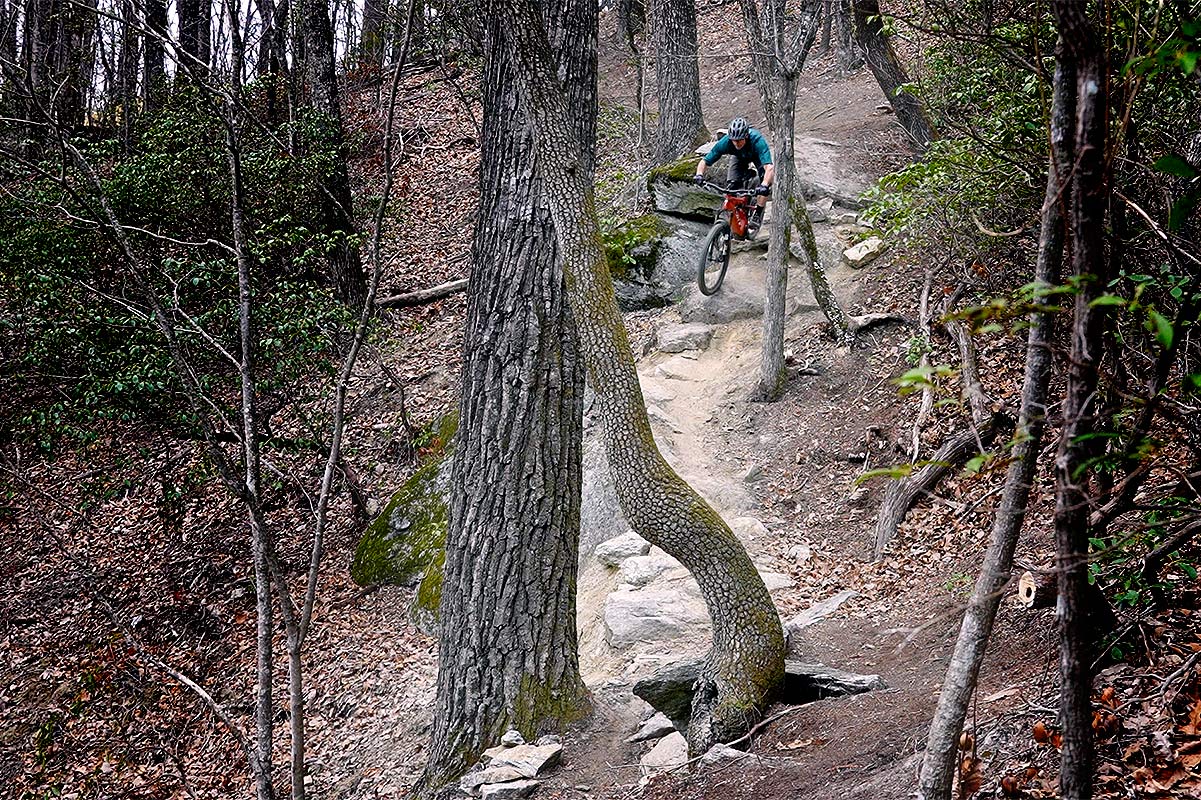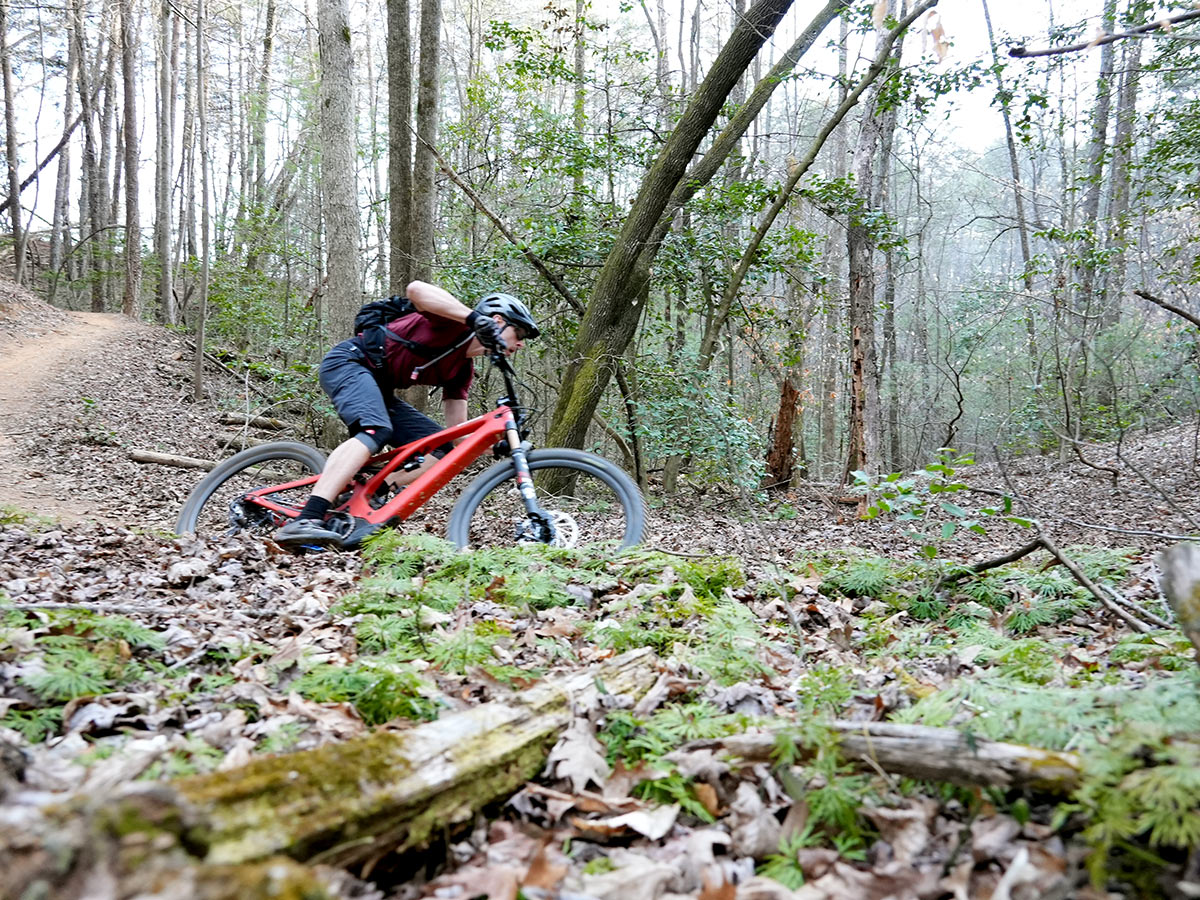The new Specialized Turbo Levo v3 e-mountain bike is an absolute ripper, perfectly at home on gnarly singletrack, groomed flow trail, and everything in between. It maintains composure and kept me in control on some incredibly technical sections, while turning formerly soul-sucking climbs into a damn good time.
I’ve been riding this bike for about a month, with trips to Wilkesboro’s Dark Mountain trails and Hendersonville’s Kanuga Bike Park to put all the suspension to the test. Here’s a video overview with riding impressions and a closeup look at the fantastic new Mastermind control system…
2021 Specialized Turbo Levo video review
What’s impressive about this bike is how well all of the different improvements and features, not to mention those tires, all come together to provide a killer ride up and down the mountain, performing equally well over technical terrain and flow trail.
Our launch coverage covers the geometry, pricing, and specs in its tech overview, but there were a few features their PR didn’t fully show, so let’s take a closer look…
Closeup details on the new Turbo Levo eMTB

Here’s the bike in stock form, with the adjustable headset cup in its center position and the rear flip chip in High mode.
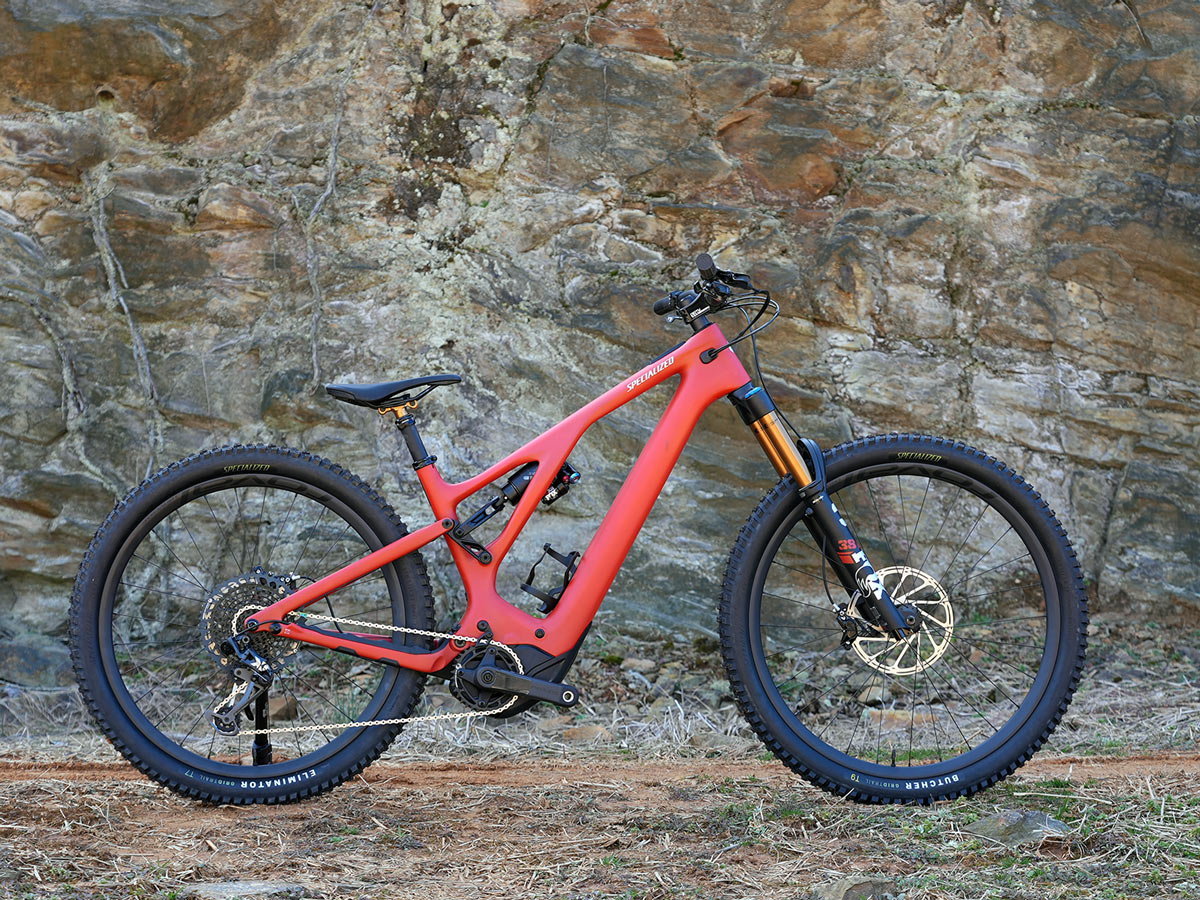
And here it is with the rear shock fully compressed. It gets low, but short 160mm crank arms provide decent ground clearance.
Specialized made a big deal out of the new frame design allowing a bigger rear shock with external reservoir and still fitting a full size water bottle. Above, the shock shown fully extended, and below fully compressed:
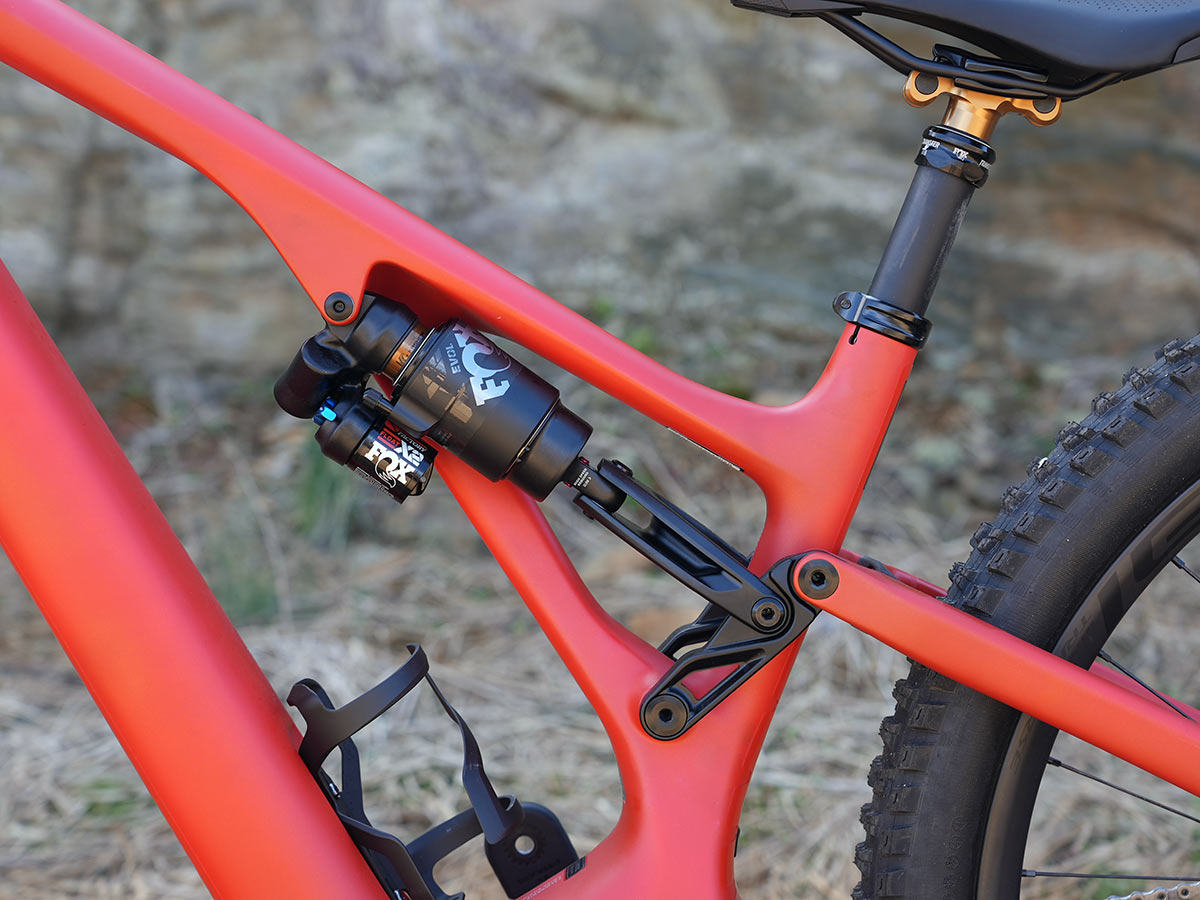
If anything, space inside the front triangle increases during compression. As long as you’re running a side-entry water bottle cage, you should be able to get a full-size bottle in there…at least in the larger frames like this one. But definitely a normal-sized bottle in every frame size.
The Levo Pro comes with a carbon Specialized Trail handlebar with Deity Copperhead stem and Knucklebuster grips. The bar, and the bike in general, are almost completely free of logos save for the “S” on the headtube and one single Specialized logo on the top tube’s right side.
The stock upper headset cup puts the steerer in the center position. To adjust it slacker or steeper, you’ll swap that with the included offset cup. While it has +/-1º printed on either end, the geo chart suggests it actually only makes it 0.5º slacker…to get the full 1º slacker head angle, you need to flip this:
The lower Horst pivot uses offset bolt hardware to give you two positions. Switching from High to Low will lower the bottom bracket about 6mm, but also extend the chainstay length about 6mm. It will also make the head angle 0.5º slacker.
A SRAM Eagle X01 drivetrain comes stock, with short 160mm Praxis carbon crankarms. While the S-Works model adds XX1 wireless (and $3,000 to the already high price tag…this bike runs $12,000 USD), I think there’s little reason to upgrade anything on this bike.
The Turbo 2.2 motor has the same footprint as before, just with better firmware and a more durable belt driving the cranks inside it.
With one single 6mm hex bolt, you can drop the battery out and swap it trailside for longer rides. That said, we were out in the woods filming for 7 hours one day, shooting tons of back and forth repeat runs, and I still had 10% battery left by the time we wrapped. And that was with a lot of Turbo use.
The upgraded cable seals use one set of sealing at the actual plug, plus a door cover to keep splashes from ever touching the wire.
The full power Levo is not compatible with their auxiliary battery like the SL-series bikes are. It’s a different plug and a different frequency, and you’d probably start a fire if you tried to put them together. So, just bring a full-size, full-power spare if you need more range.
The motor housing drops below the chainring, making it the first point of ground content over tall obstacles. I definitely smacked it a couple times, as you’ll see in the review video (coming soon). Fortunately, it survived, but something to be aware of if you routinely ride over big rocks.
A handlebar-mounted remote gives you nearly full control over the system. The “F1” button on the top goes straight to turbo mode, and underneath the – button is a Walk Assist function that’s quite helpful on hike-a-bike sections.
The +/- buttons cycle through Off, Eco, Trail, and Turbo modes. Or, hold one down for a few seconds and it switches to MicroTune, which lets you change the assist level in 10% increments from 0 to 100. This is a brilliant feature that gives you much finer control over the power output without having to pull out your phone to change the preset modes via the Mission Control app.
The brains of the bike is the new Mastermind display unit. Sharp resolution makes it easy to see a lot of data at once, and you can fill the screen with multiple metrics like power, speed, heart rate, battery, time of day, etc.
Prior Turbo bikes used a simple bar graph to show remaining battery, but having ride speed and time of day quickly visible was super handy. Position a GoPro chest mount just right, set it to 4:3 mode, and you can likely see all the action you want and your speed on those sections in a single shot.
The sidearm frame design keeps the suspension’s mounting points rock solid so the shock can work as intended. Rebound and compression adjustments are easily accessible from the non-drive side.
A small mud flap keeps the lower pivot clean, and a tiny chainguide assists chain management. The bike will accommodate up to a 34-tooth chainring, but it comes with 32-tooth rings.
Tire clearance with the stock 2.6″ tires is more than adequate, as is the grip from their new Butcher T9 and Eliminator T7 tires with the GRID Trail casings and rubber.
A SWAT mini tool hidden in the steerer tube is a welcome bonus. There’s no hidden storage in the downtube on this bike, so you’ll need to wear a pack or attach a pouch elsewhere for tubes, CO2, pump, etc.
The Fox 38 is a good match for the bike, keeping things very stiff and the bike going where I pointed it. Just don’t forget that it has the second pinch bolt before you try removing the wheel.
The Factory-level fork offers separate high- and low-speed adjustments for both compression and rebound, which I appreciate on a bike that’s capable of tackling so many different types of terrain.
Huge 200mm brake rotors are basically standard equipment on e-mountain bikes, and for good reason. Specialized ups the front rotor to 220mm on the largest three frame sizes for even more stopping power. The stock SRAM Code RSC brakes worked well on long, sustained descents.
2021 Specialized Levo Pro actual weight
Our size S5 (equivalent to XL) test bike with tubeless setup weighed in at 48.92lb (22.19kg) without pedals. This is with a SRAM XO1 Eagle mechanical group, Roval carbon trail wheels, Fox Factory suspension and dropper seatpost, and Specialized/Diety cockpit. Full build specs available in our launch coverage.
2021 Specialized Turbo Levo v3 ride review
Now’s a good time to note that I’ve kept the bike in a stock High/Center setup so far, but will be switching things around for further testing.
If Specialized’s primary goal was to create a playful bike, they’ve succeeded. For me, “playful” translates to nimble, able to flick around tight corners and pop off the little jumps. There, it succeeded, while doing all the climbing things any good e-bike should do, too.
I can sum up climbing on the Levo by simply saying it’s a rocket, and it makes the climbs fun. Like, really fun if you dial it up to Turbo.
The only asterisk about its climbing performance is that it likes a higher cadence. Grinding a low cadence out of a tight corner or abrupt pitch sounded like it was straining the motor.
There’s a constant low-level motor noise (as with any e-bike) during normal riding, but it becomes much louder and angrier at low cadence, high effort grunts. The solution is to simply shift to an easier gear, but until I sorted that out, I thought maybe the motor was having issues.
Butcher & Eliminator tires are awesome
Here’s why I like Specialized’s new mountain bike tires so much, and why I think they’re such a key piece of this bike’s spec: They work well everywhere.
Click to enlarge that pic above and you’ll see how much they’re absorbing that root, yet without giving up side-loaded stability on natural terrain*.
That’s a tough ask for tires on a ~50lb bike that likes to go fast. These tires feel stiff to the touch when manually checking tire pressure (i.e. squeezing the tire), which can lead to underinflation if you’re not actually checking with a gauge. Fortunately, they hold their own running soft. Combined with their grippy rubber, they provide gobs of reliable traction and support on the worst terrain.
*As great as this was for trail riding, these lower pressures did result in squirm on hardpacked jump lines. For groomed bike park riding I’d definitely add 5-7psi to support the G-outs and landings.
The suspension proved adept at all types of bumps, and even kept the tire on the ground during hard braking efforts.
Despite the short cranks, there were a couple of instances where I smacked the pedals powering out of a techy section. Not often enough to really complain, but I would be more cautious if adjusting the bike to its lowest position.
Overall, it’s hard to find fault with the new Levo. It’s fast, inspires confidence, and is loaded with a ton of useful, fun technology that delivers a far more immersive e-bike experience than any other system out there.
This much bike comes at a price, but there’s a customer for everything, and I suspect Specialized’s best customers will enjoy this very much (while paving the way for its technology to trickle down…quickly, I hope).
Video coming soon, be sure to subscribe to the Bikerumor YouTube channel so you don’t miss it!
